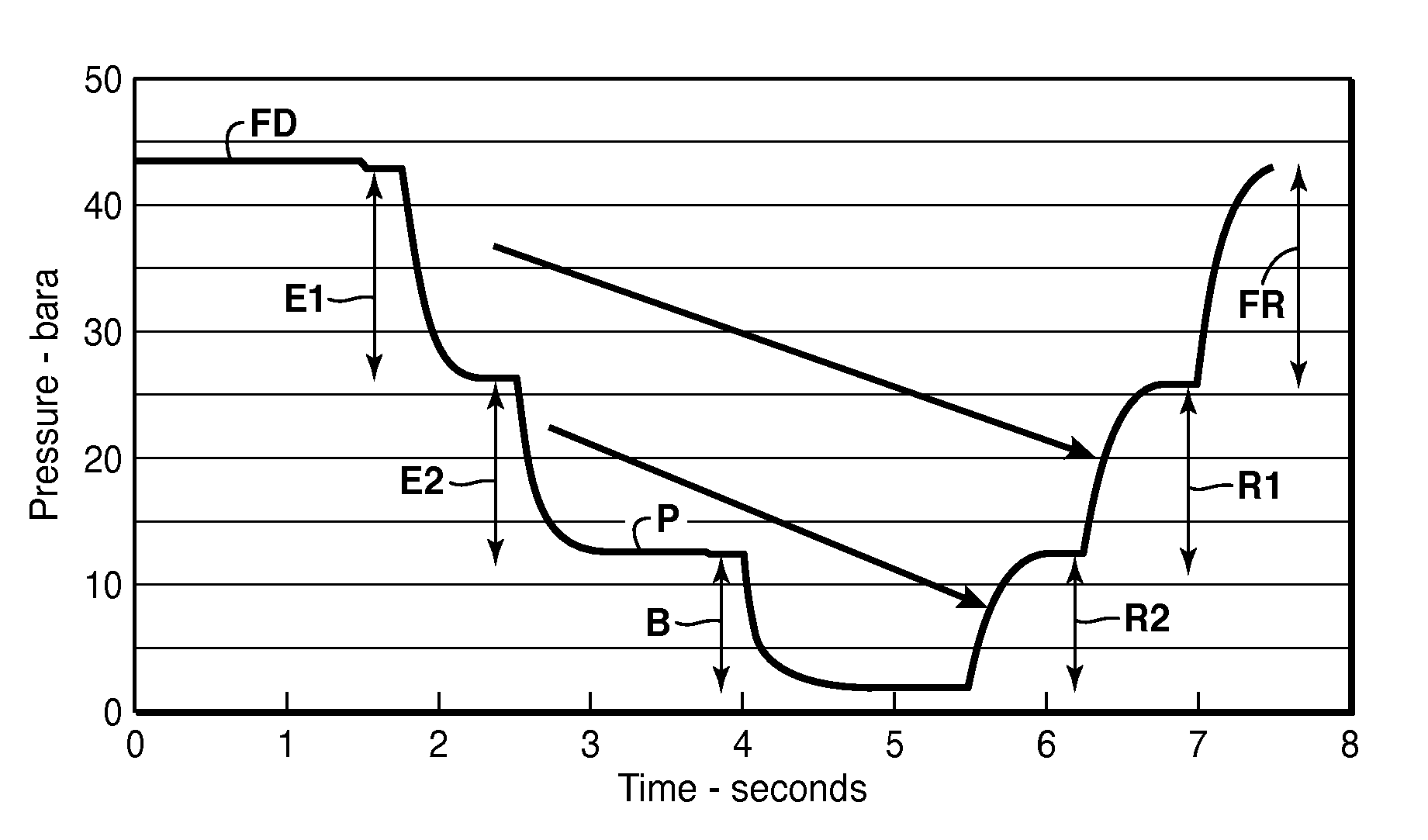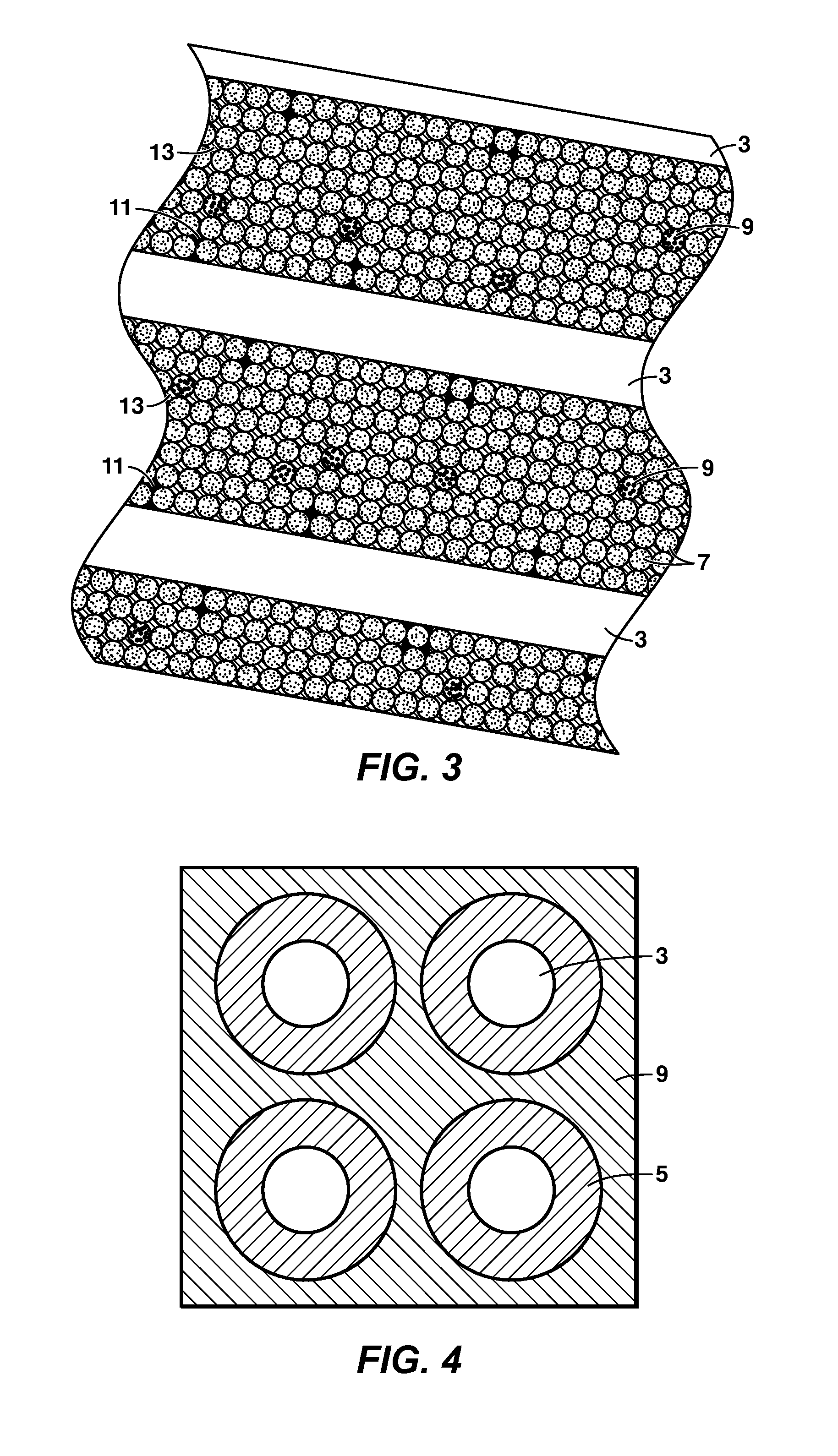Methods of removing contaminants from hydrocarbon stream by swing adsorption and related apparatus and systems
a technology of hydrocarbon stream and contaminants, applied in the direction of separation process, gaseous fuel, fuel, etc., can solve the problems of not producing a viable solution to the problem of producing good recovery of methane, significant amount of product gas in the flow channel and void space, and poor recovery of desired produ
- Summary
- Abstract
- Description
- Claims
- Application Information
AI Technical Summary
Benefits of technology
Problems solved by technology
Method used
Image
Examples
example 1
[0094]This example illustrates CO2 and H2S removal from natural gas at high-pressure using the RC-PSA system 700 from FIG. 7, wherein 98% recovery is predicted through simulation. With reference to the simplified process flow diagram in FIG. 7, the RC-PSA unit 701 is utilized along with various compressors 710a-710e to remove contaminants from a feed stream. The RC-PSA unit 701 includes multiple adsorbent beds connected via valves and piping as described in more detail below. To operate, the feed stream is passed to the RC-PSA unit 701 via conduit 702 and 704. The feed stream preferably comprises natural gas, which may be blended with the recycle stream from the recovery purge outlet conduit 703 associated with compressor 710a. A purified product stream rich in methane exits the RC-PSA unit 701 via conduit 706 at a slightly reduced pressure due to pressure drop across the adsorbent beds, valves and piping internal to the RC-PSA unit 701. In this example, the feed gas entering throug...
example 2
[0129]This example describes a modified cycle for the RC-PSA system in Example 1. In this example, the RC-PSA system 700 in FIG. 7 is used to process the same feed gas as described in Example 1. The configuration of each adsorbent bed is the same as Example 1, including flow channel dimensions, adsorbent bed length, adsorbent material, mesopore filler, etc. However, the number of adsorbent beds has increased from fourteen to sixteen to accommodate the modified cycle, which utilizes three equalization steps instead of two equalization steps as in Example 1.
[0130]A cycle schedule for the sixteen adsorbent beds for this example is shown in FIGS. 12a and 12b. Notation for the specific steps is the same as in FIGS. 10 and 11, described in Example 1. In FIGS. 12a and 12b, two groups of adsorbent beds are shown with the adsorbent beds in the first group labeled 1 to 8 in the top portion of the sequence graph and adsorbent beds in the second group labeled 9 to 16 in the bottom portion of th...
example 3
[0167]This example illustrates CO2 and H2S removal from natural gas at high-pressure using the RC-PSA system 800 from FIG. 8, wherein over 99% methane recovery is predicted and high purity product stream is produced with less than 1.5% CO2 and less than four ppm H2S. With reference to the simplified process flow diagram in FIG. 8, two RC-PSA units 801 and 821 are utilized along with various compressors 808 and 814 to remove contaminants from a feed stream. In this example, the two RC-PSA systems are arranged in series, where the first RC-PSA unit 801 produces the product gas of the required purity and the second RC-PSA unit 821 recovers methane from the blow-down stream of 801 to improve the overall product recovery for the system 800. Each of the two RC-PSA units 801 and 821 include one or more adsorption beds connected via valves and piping.
[0168]The natural gas feed stream containing CO2 and H2S enters the first RC-PSA unit 801 via conduit 802 and a purified product stream enrich...
PUM
| Property | Measurement | Unit |
|---|---|---|
| diameters | aaaaa | aaaaa |
| diameters | aaaaa | aaaaa |
| adsorption time | aaaaa | aaaaa |
Abstract
Description
Claims
Application Information
 Login to View More
Login to View More - R&D
- Intellectual Property
- Life Sciences
- Materials
- Tech Scout
- Unparalleled Data Quality
- Higher Quality Content
- 60% Fewer Hallucinations
Browse by: Latest US Patents, China's latest patents, Technical Efficacy Thesaurus, Application Domain, Technology Topic, Popular Technical Reports.
© 2025 PatSnap. All rights reserved.Legal|Privacy policy|Modern Slavery Act Transparency Statement|Sitemap|About US| Contact US: help@patsnap.com



